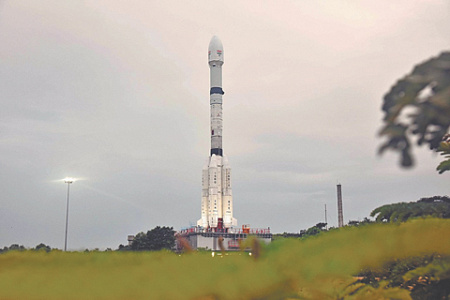
In a striking display of partnership, the United States and India recently launched a sophisticated satellite designed to monitor Earth’s surface with unprecedented precision, a mission aimed at predicting natural disasters. This collaboration between NASA and the Indian Space Research Organisation (ISRO) symbolizes the heights of their strategic alliance. Yet, back on Earth, this relationship is fraught with tension, as Washington threatens New Delhi with a looming trade war that could unravel decades of diplomatic progress.
At the heart of the conflict is a threat by the Trump administration to impose steep 25% tariffs on a wide range of Indian imports. With a bilateral trade volume of approximately $130 billion at stake, the economic consequences could be severe. This friction emerges despite both nations viewing each other as indispensable partners in a broader strategy to counterbalance China’s growing influence in the Indo-Pacific. The impending trade deadline puts one of the world’s most critical democratic partnerships to the test.
The relationship’s complexity is deepened by strong cultural and demographic bonds. The influential Indian diaspora in the United States plays a vital role in business, science, and politics, weaving the two nations together. For the past quarter-century, Washington has actively courted India, seeing the world’s largest democracy as a key pillar in its foreign policy. However, this long-standing courtship is now threatened by economic disputes that challenge the very foundation of the alliance.
A significant geopolitical complication is India’s continued reliance on Russian oil. Washington has warned that it may impose prohibitive 100% tariffs on any nation purchasing Russian crude if a ceasefire with Ukraine is not achieved by an early August deadline. As a major consumer of Russian energy, India is caught in a geopolitical crossfire, forced to navigate its strategic autonomy between its partnership with the West and its historical ties with Moscow.
Meanwhile, the jointly developed NISAR satellite orbits the planet as a powerful symbol of what the partnership can achieve. Hailed by NASA as a revolutionary tool for Earth science, it will provide critical data on everything from volcanic activity and glacial melt to crop yields and flood management. This model of scientific collaboration, which also builds on India’s long history of space exploration including early missions with the Soviet Union, stands in stark contrast to the terrestrial disputes, leaving the world to wonder whether the strategic vision of space cooperation can ultimately overcome the gravity of earthly economic and political conflict.
